Real Betis visited Mallorca last Saturday and managed to snatch all three points away with an impressive first-half display that saw them seal the deal in another thrilling La Liga fixture. Even though the home team snapped out of limbo by the end of the first half and especially going into the second, it was not enough to get back into the game.
This tactical analysis will give you both teams’ tactics and use analysis in order to see how exactly Real Betis managed to tally their second win in a row and make Mallorca’s relegation battle that much more difficult.
Lineups
Vicente Moreno opted to deploy his team in a rather familiar 4-4-1 shape, a system they’ve used in 51% of all of their games in 2019/20 but the personnel saw some changes in regards to their previous clash.
Lumor Agbenyenu returned to the lineup and replaced Joan Sastre, while Fran Gámez was deployed on the right side. Reina was, of course, between the sticks and just behind the duo of Raillo and Valjent. In the middle, Salva Sevilla and Iddrisu Babba formed the pivot while Rodríguez and Kubo were slotted out wide. Aleix Febas was in the no. 10 role just behind Ante Budimir up top.
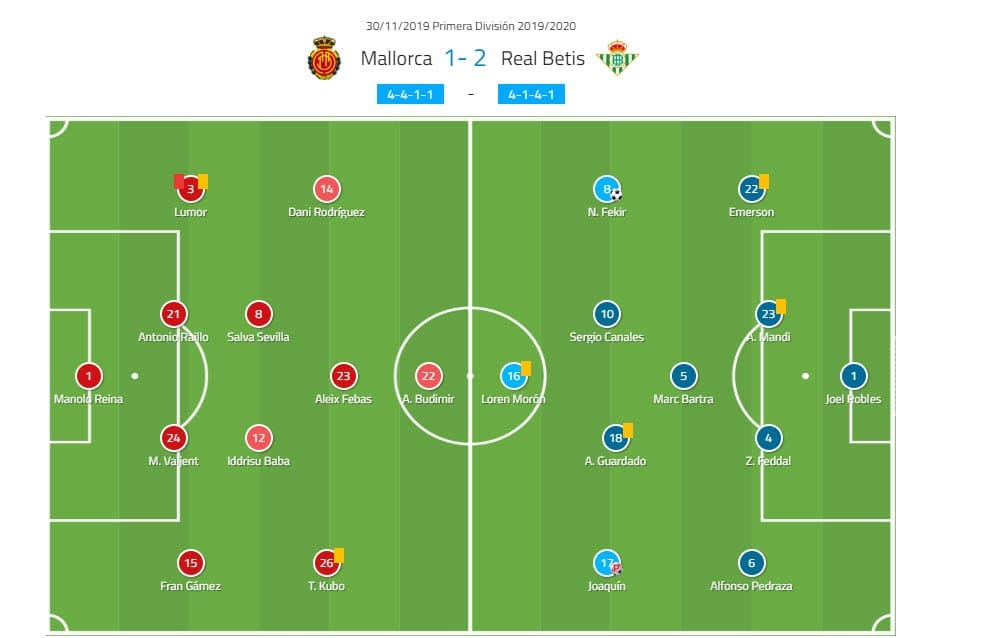
Rubi also decided to go with a somewhat familiar shape but considering we’ve seen Real Betis in all sorts of formations this year, the 4-1-4-1 was still used just 17% of the time in 2019/20. Joel Robles was in goal and protected by a back four of Alfonso Pedraza, the centre-back duo of Feddal and Mandi, and Emerson as the right-back.
The returning Marc Bartra was the man in front of them and just behind the four of Joaquín, Guardado, Canales, and Fekir. The lone striker position was given to Loren Morón once more. Of course, with the absence of Moreno and Sidnei, along with a number of other troopers, Rubi did send a bit of a reshuffled squad to face Mallorca but they did the job well.
Real Betis establish dominance
It didn’t take long for the away side to really get a foothold in this game and establish their dominance. The first-half was, for that reason, almost exclusively about them outmanoeuvring and outplaying Mallorca.
Real Betis had a distinct pattern in their build-up play that utilised their midfield rotations to the fullest. Mallorca would not press them high but would rather form a 4-3-3 or a 4-4-2 mid-block to try and shut down the channels towards their two midfielders who were just in front of the defence.
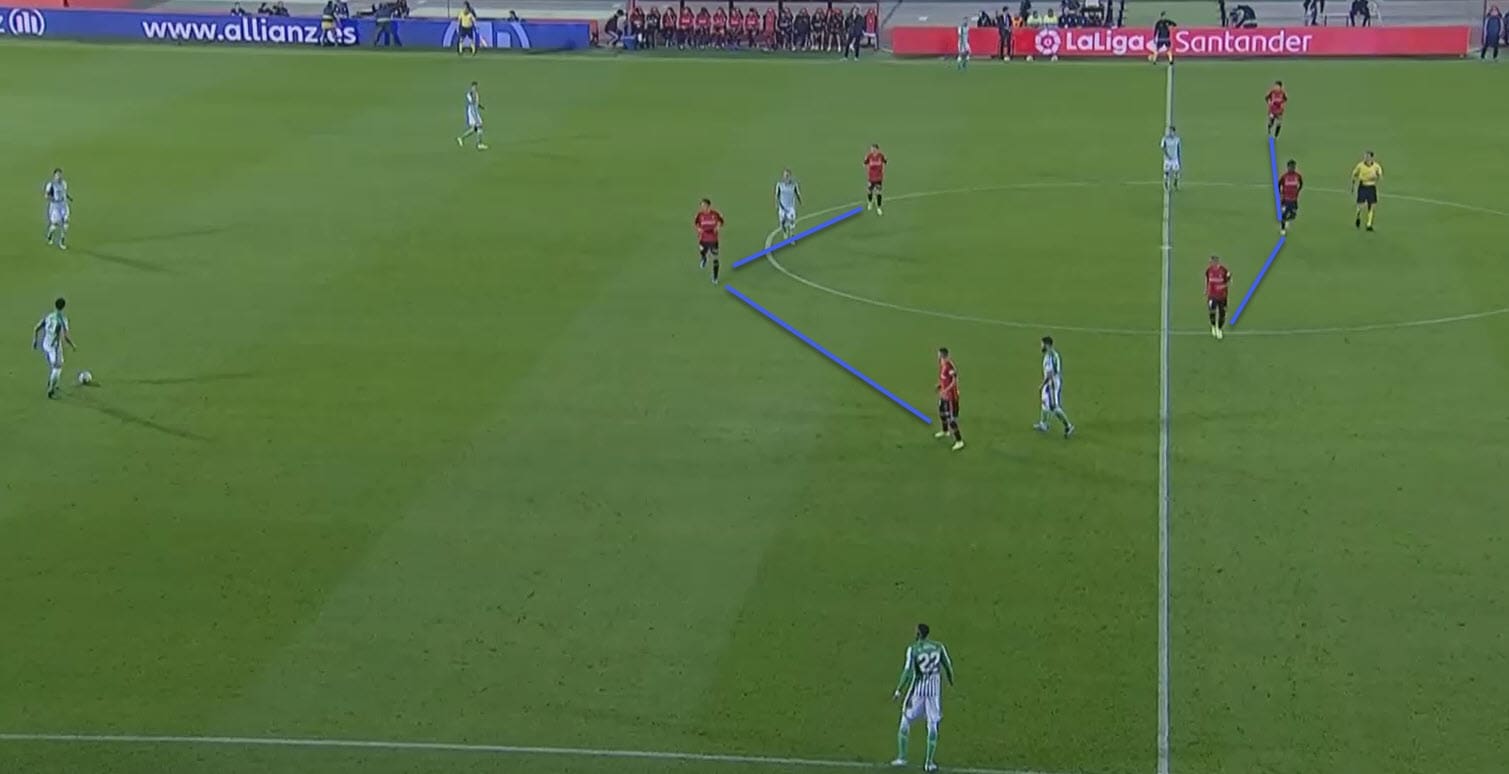
There were two ways in how Real Betis responded in that case. Firstly, Bartra would promptly drop in-between the centre-backs and they would stretch their backline with full-backs moving just slightly higher up the pitch.
The ball would then be advanced through a regular pattern from Bartra to Feddal and then into Canales who would run into space to receive the pass and move the ball upfield.
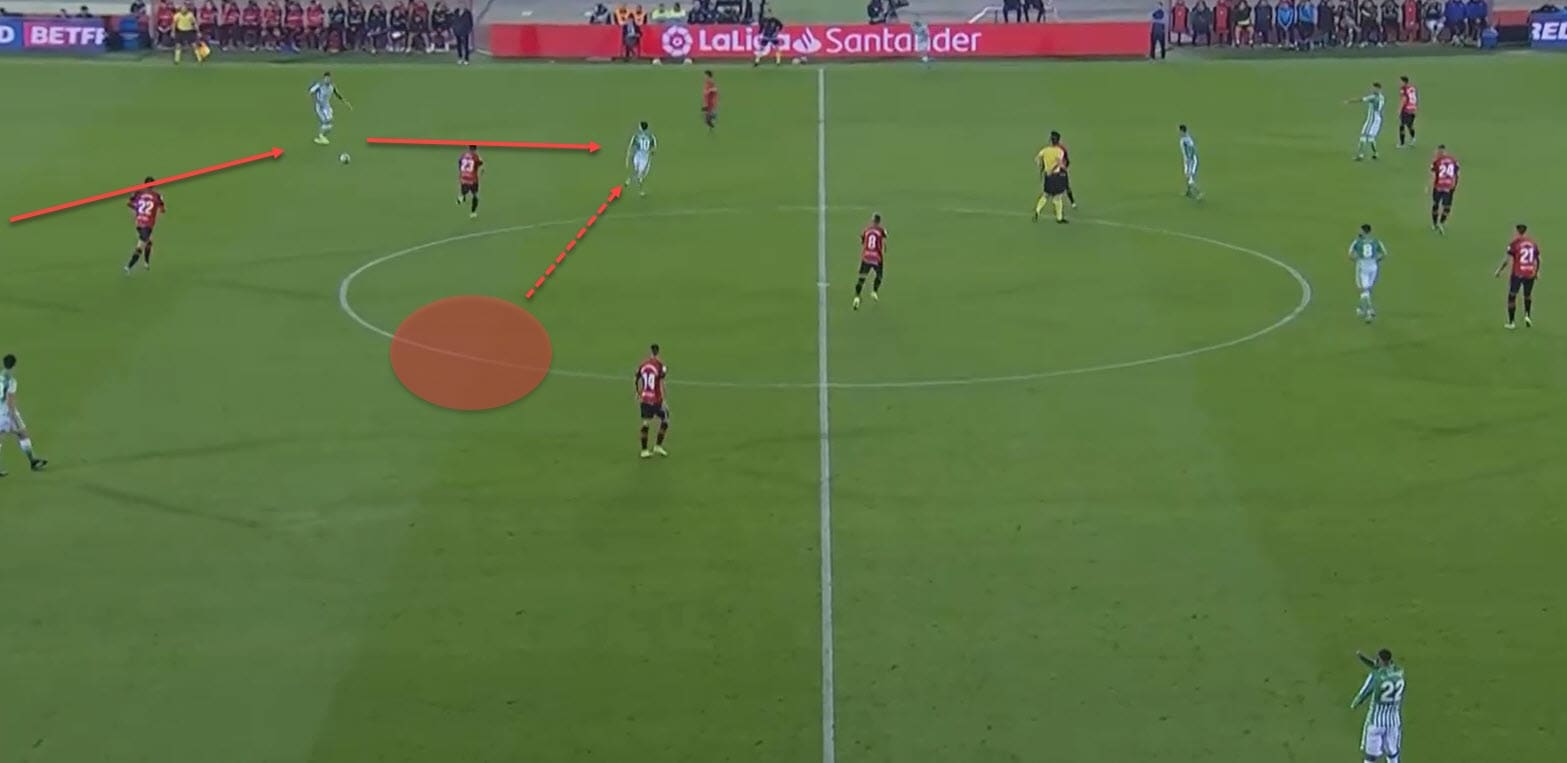
The key was to keep the midfielders on vertical platforms so the ball can be progressed successfully. Mallorca’s reluctance to press, however, also played a part in Real Betis having the time and space to deploy the passes necessary.
When the hosts actually decided to go higher up, Bartra would return to midfield alongside Canales and the goalie would act as the third man in between the centre-back pairing in the build-up.
The ball would often be recycled out wide and the wide centre-back would form a triangle with the approaching full-back and the midfielder to escape the press, and as the ball moved forward the same principle would be applied: one player drops and the other moves the ball up, as can be seen in the following sequence.
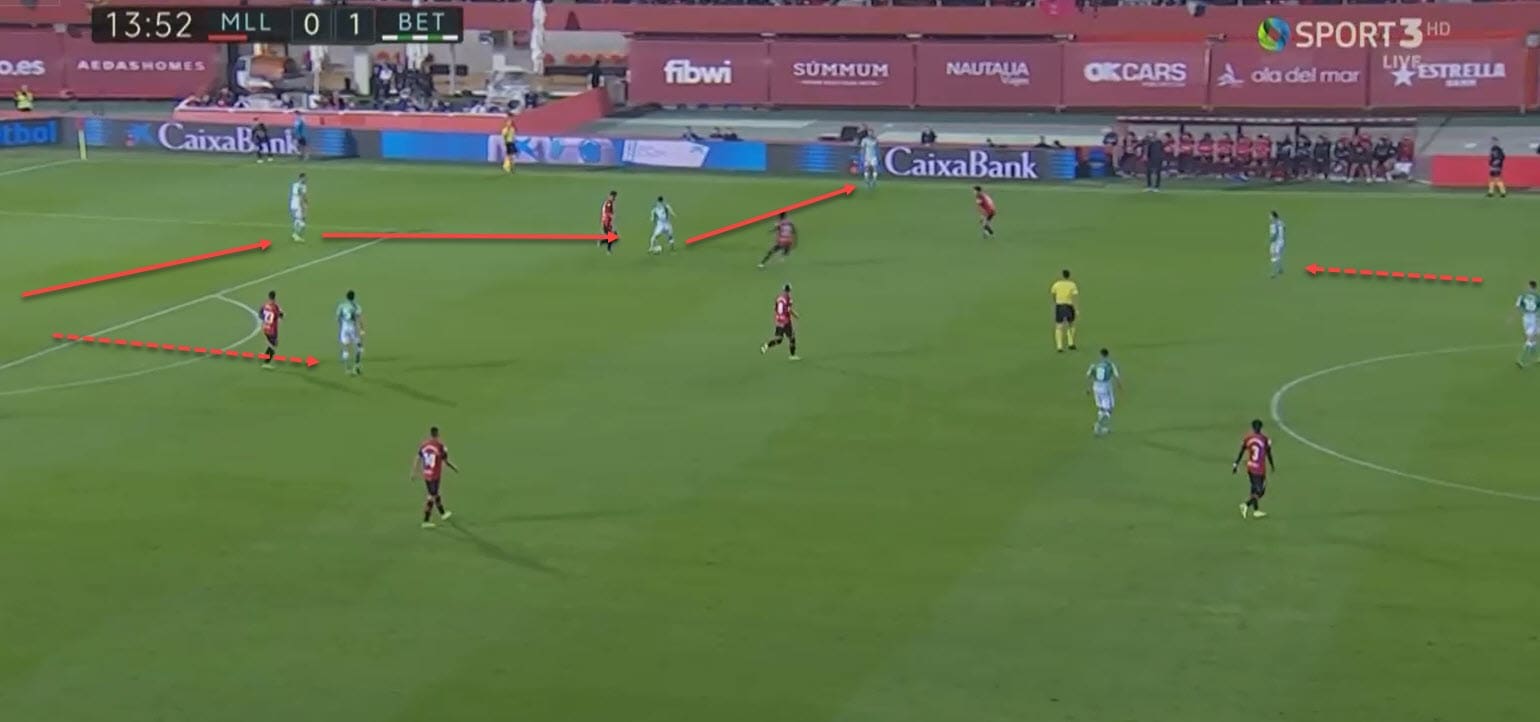
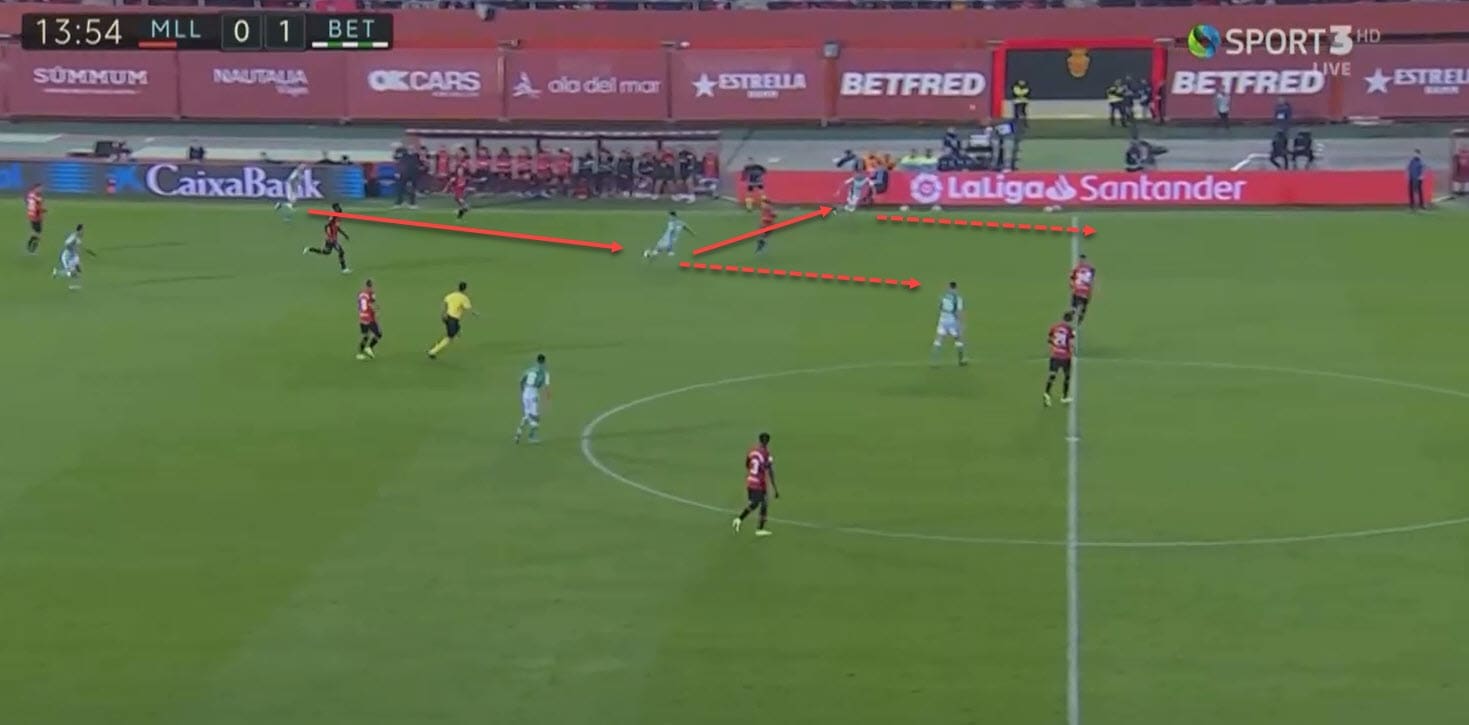
The main thing to note here is the usage and creation of space as Betis would effectively pull defenders out of their shape for their teammates, who would then move into it. A similar principle was used in the build-up to their first goal.
Canales drops deeper and drags away his marker, which creates space for Morón to slot into. Even though the ball is not immediately played into him, this will prove vital later on. With Canales on the ball and with enough space and time, he sends out a pass to Joaquín, whose run drags both defenders out of shape and leaves room for Morón to rush into from in-between the lines.
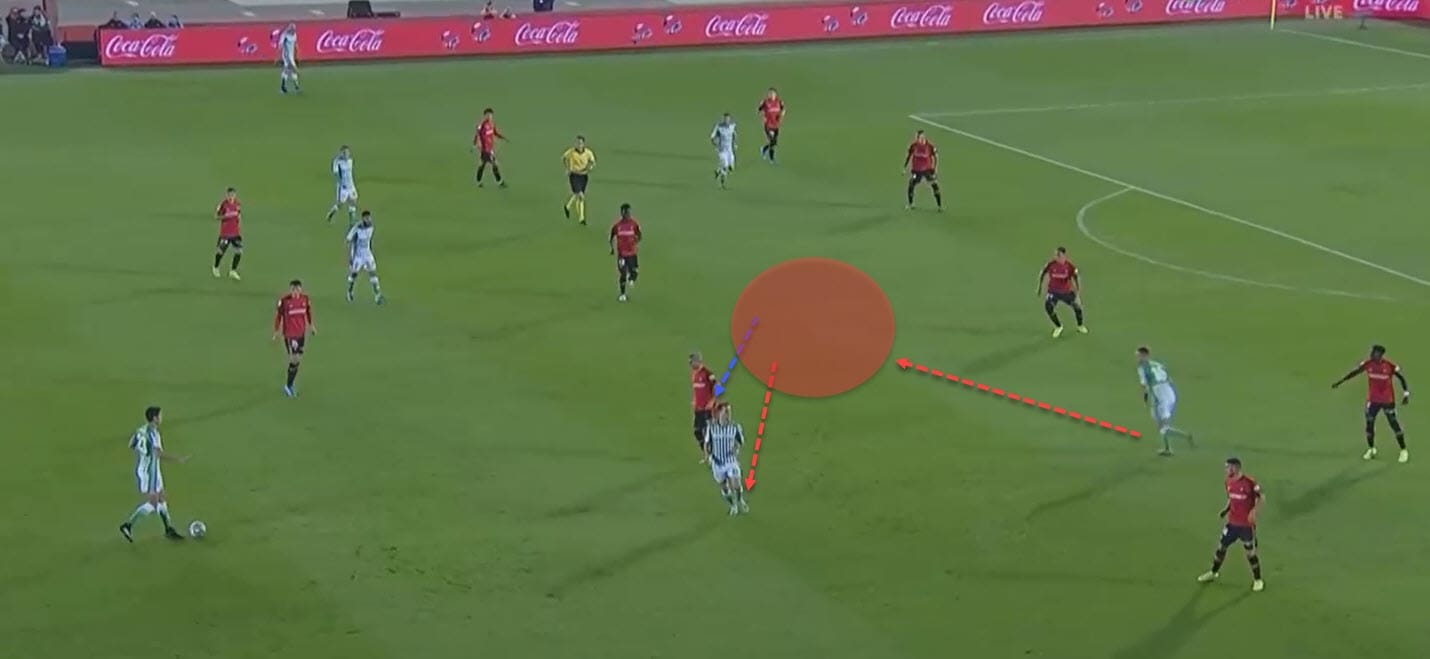
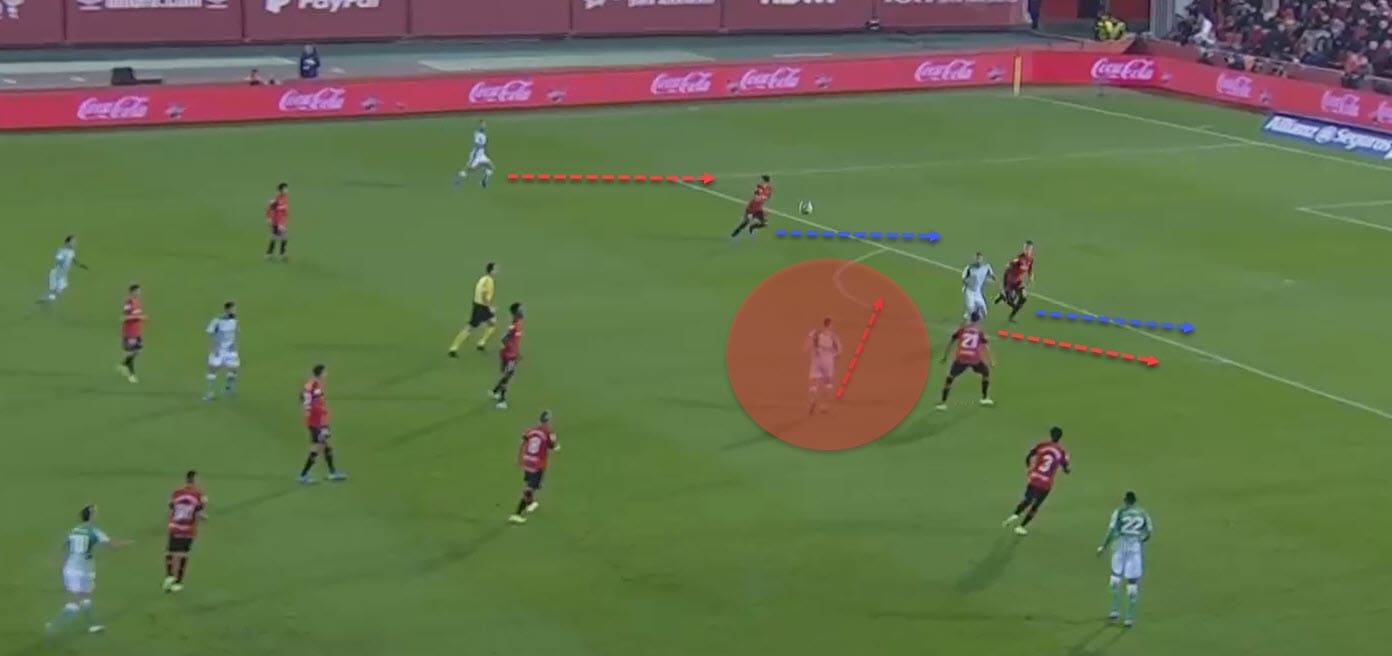
Pedraza then finally picks up a rebound in the box and sends it towards Fekir, who is fouled upon contact and earns the penalty that will give Real Betis an early 1-0 lead. Even though the initial movement of both Canales and Morón didn’t look significant, it turned out to be vital so that the latter player can burst through the middle and into the box to finally get the ball to his full-back.
Mallorca’s exploitation of the flanks and Real Betis’ aggressiveness
Throughout the majority of the first stages of the game, Mallorca seemed to rely on their wide areas and would work every attack with the goal of exploiting them. For the most part, they had to deal with Real Betis’ heavy pressing with a figure of 8.1 PPDA for the visitors in total.
They would usually just try and prompt a blind clearance from Mallorca and rely on winning the duels in the middle once that was accomplished. With 65% aerial duels won, the visitors managed to secure possession through these tactics more often than not.
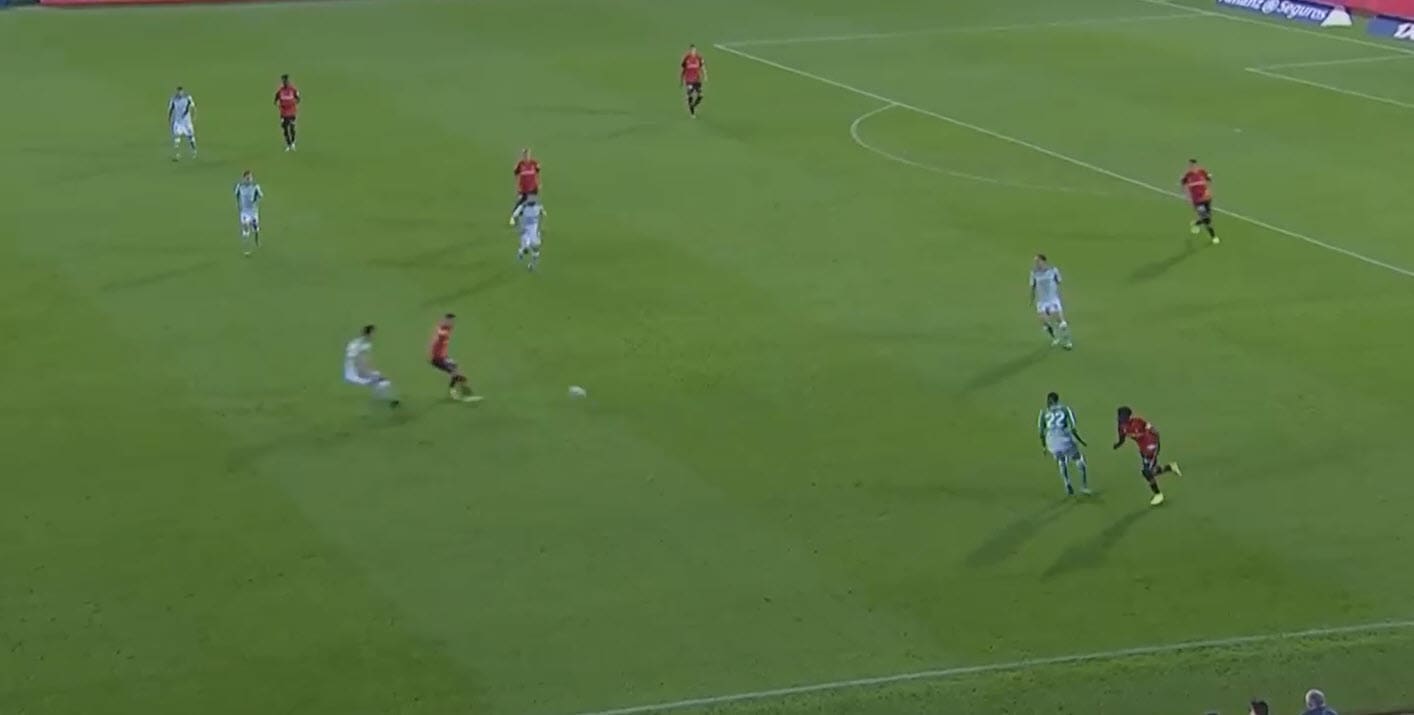
Still, it did leave space behind their back in scenarios when Mallorca managed to get the ball forward and stabilise play. Some of the usual patterns involved dropping of a wide player, usually Rodriguez, to receive the pass and then either send Lumor into the overlap or just leave him to create the space by himself.
Once Lumor was away through that left flank, they would either look for a cut-back or simply a cross into the box. This seemed to be a big part of their tactics since they deployed 22 crosses with 55% accuracy and most of their xG values arose from that left side as well.
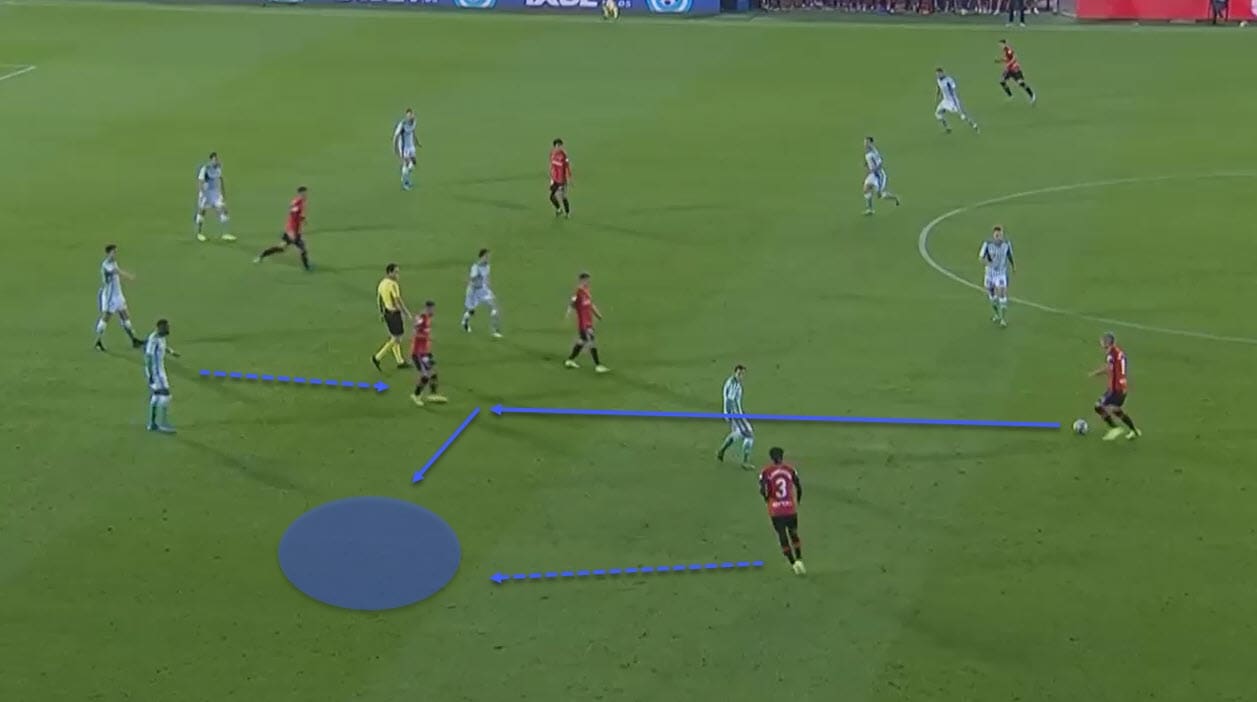
Even though they managed to threaten the opposition with their xG constantly on the rise, the insistence on crosses into the box didn’t exactly pay off, at least for now.
The problem was they couldn’t really find their targets and they couldn’t establish secure phases of possession against a really aggressive Real Betis side, which eventually ended up hurting them even more as they went 2-0 down before the referee’s whistle for the end of the first half.
But more on that in the final section of this tactical analysis.
The tides turn
The main thing that changed from that first half to the second is the intensity with which Mallorca started playing. From a team that was often seen in a mid-block, waiting for Real Betis to step into their territory, they quickly went on the aggressive themselves.
This can clearly be seen in their PPDA figures which went from 12.5 to 7.5, which is a significant decrease on the time Real Betis spent on the ball while in possession. On the pitch, Mallorca would press higher and in numbers, often hunting for balls rather than closing down channels systematically.
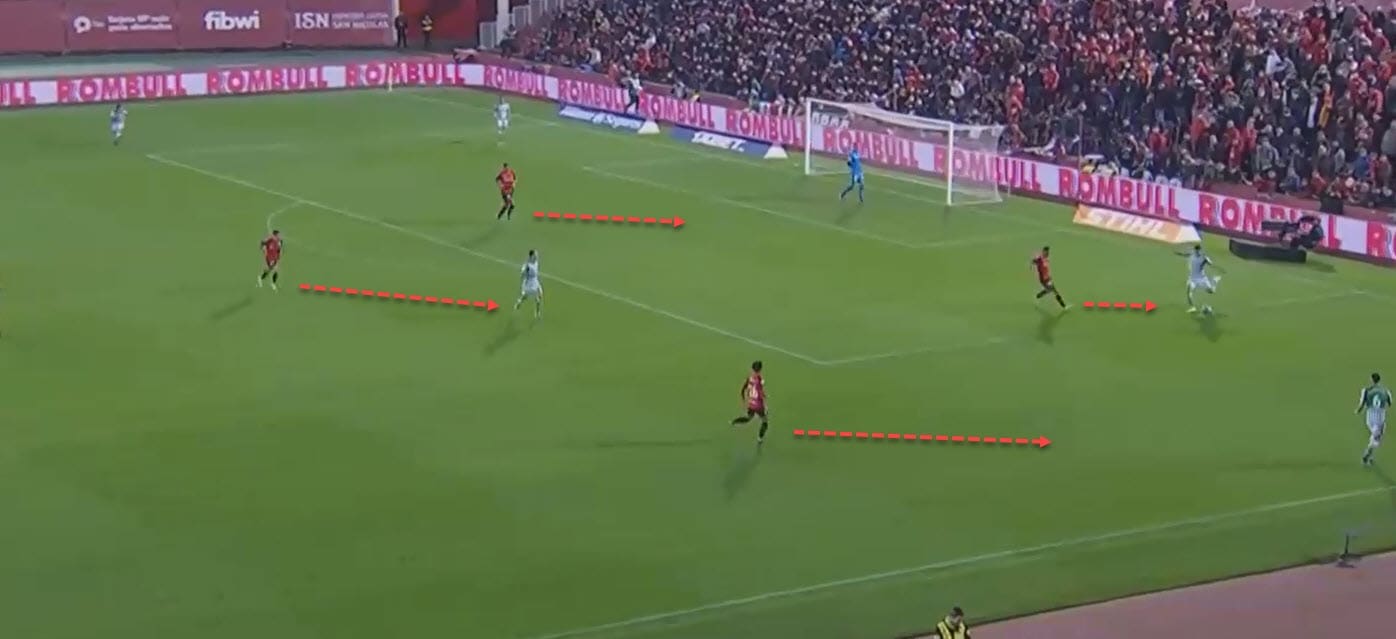
This did yield them some chances as they’ve made more recoveries per minute in the second half, registering 76 in total and three of Real Betis’ losses ended up in a shot on goal for the home side.
The turn in aggressiveness was the most notable change since their core tactics remained the same: get the ball wide and in space and then rely on either finding someone in the box through a cross or a cut-back.
Interestingly enough, this did work to a certain extent. Their only goal on the night might’ve arrived from a penalty kick but the foul was made in the box after yet another launched cross, this time from the corner kick. A total of six crosses out of eight were successful in the second half and with significant improvement in accuracy, their tactics finally paid off.
As a direct result of the game being more open and expansive, both sides were suddenly more likely to rattle the net. For Mallorca, that also meant leaving themselves exposed to Real Betis’ deadly counters since they afforded the guests too much space to begin with.
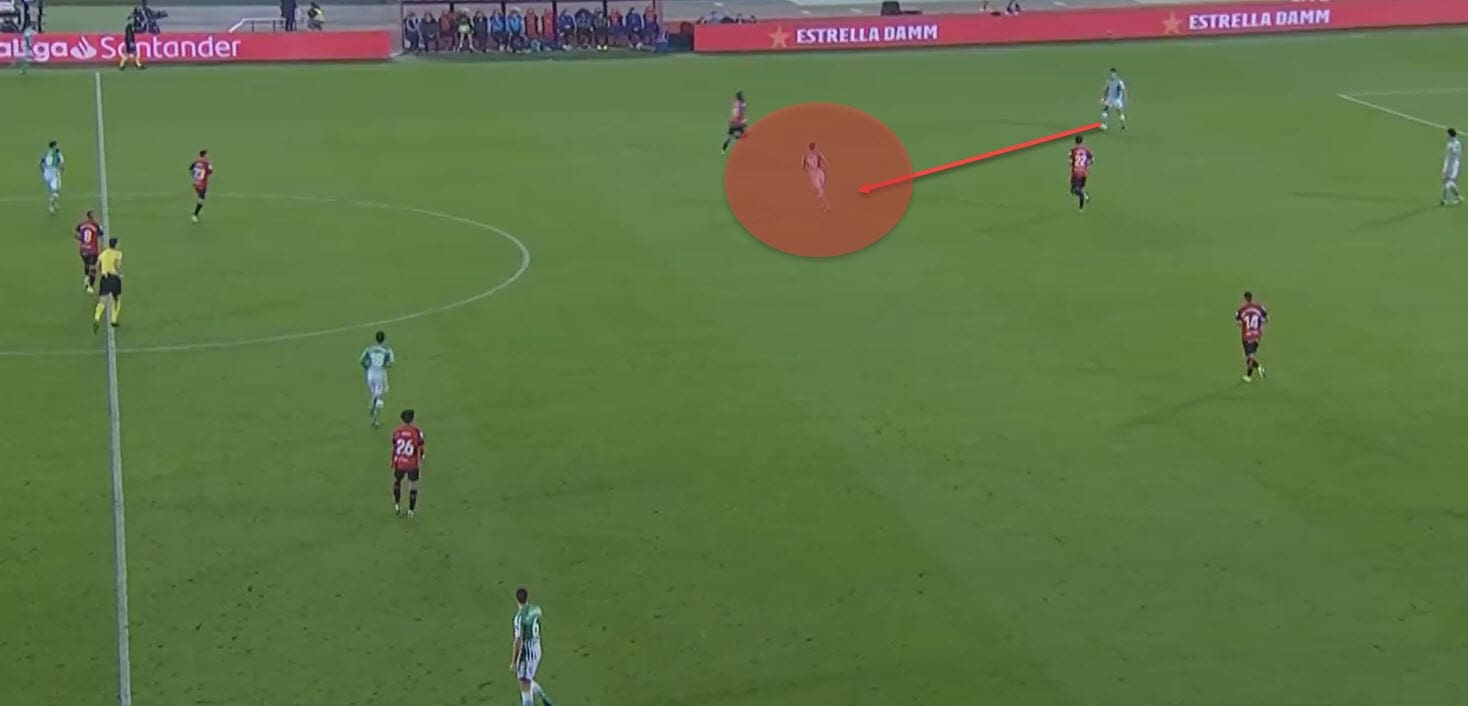
Notice above how a Real Betis build-up runs much quicker and smoother with Mallorca not yet in standard shape. Because of that, it only takes a couple of touches to get from their defence to their final third.
Canales is easily found by the backline and with enough space to run into and with Joaquín offering himself by dropping deeper, the attack is quickly progressed onto the flanks and soon enough, into Mallorca’s box.
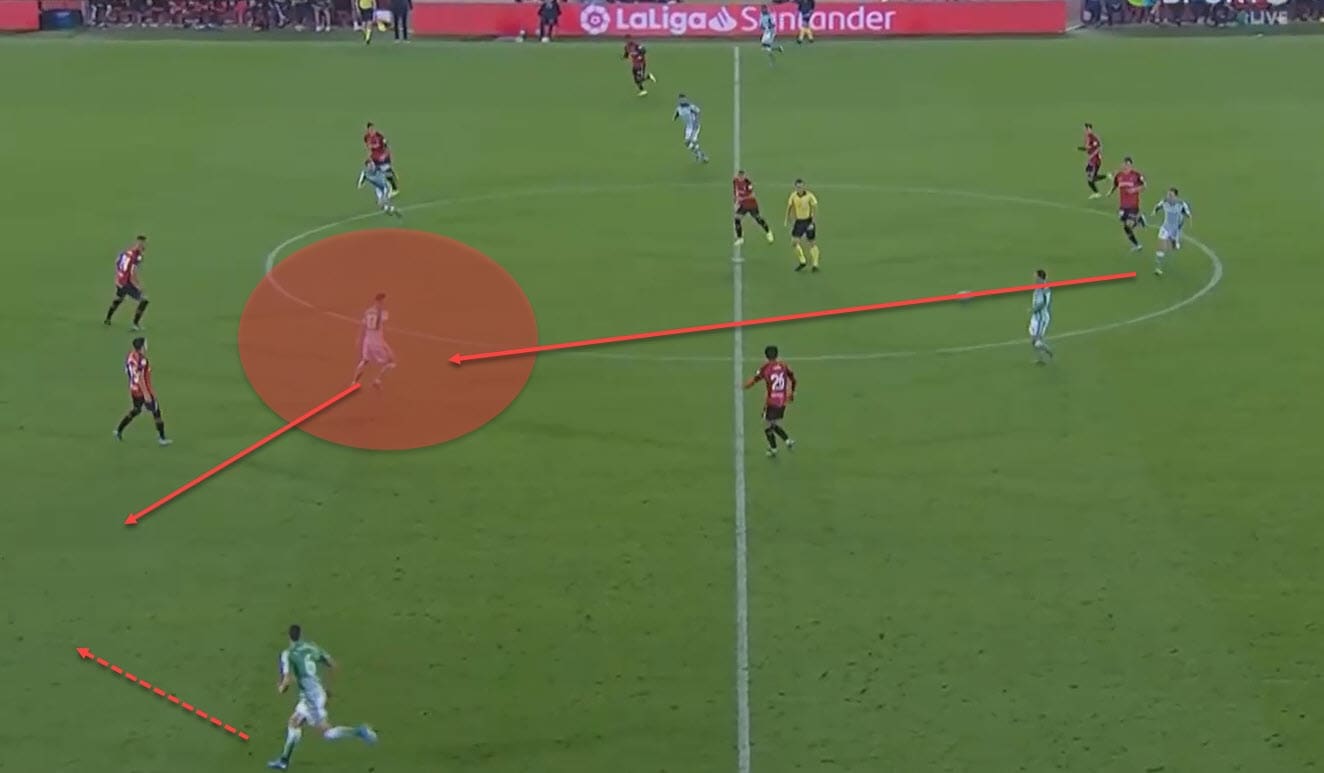
But the same could be said for Real Betis as well. Since they remained insistent on pursuing the high pressing tactics, as we’ve already mentioned in this tactical analysis, Mallorca would be awarded the same space they were when successfully escaping the press.
Takafeusa Kubo, the young Real Madrid loanee, was very much at the epicentre of everything and was often the dangerman for Mallorca.
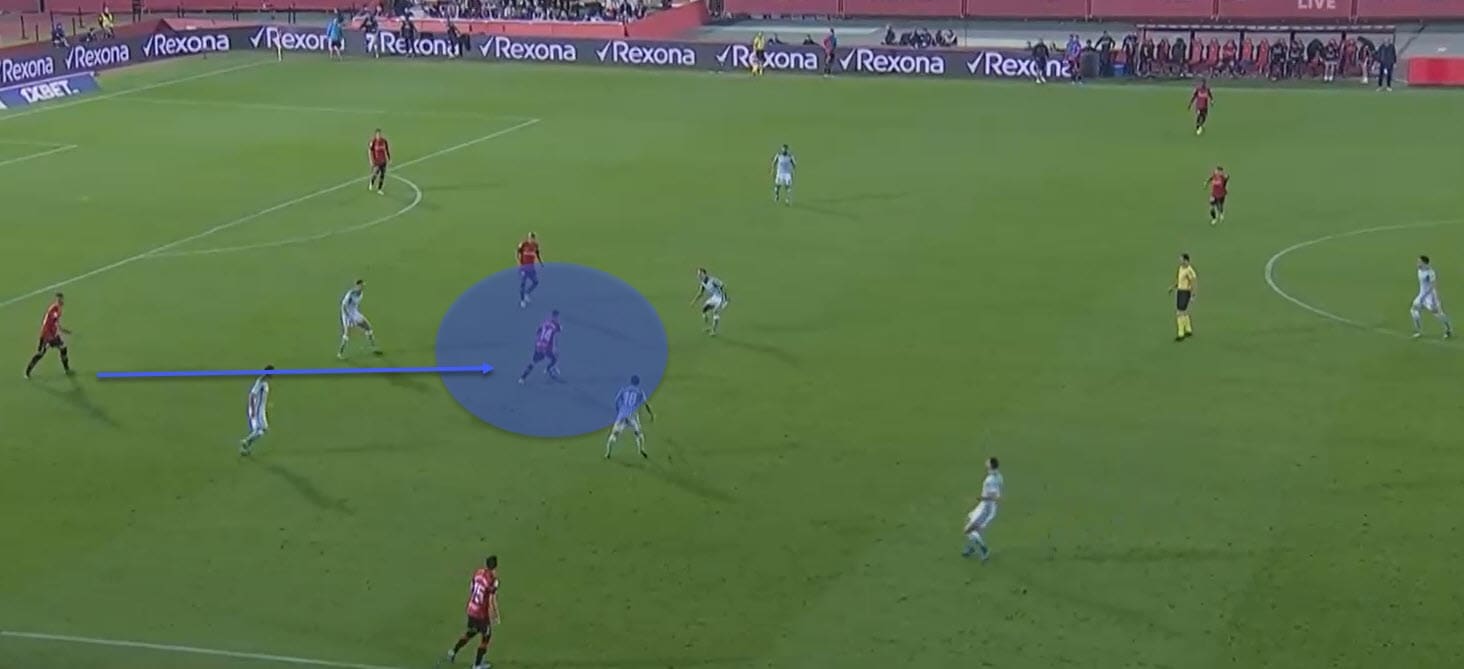
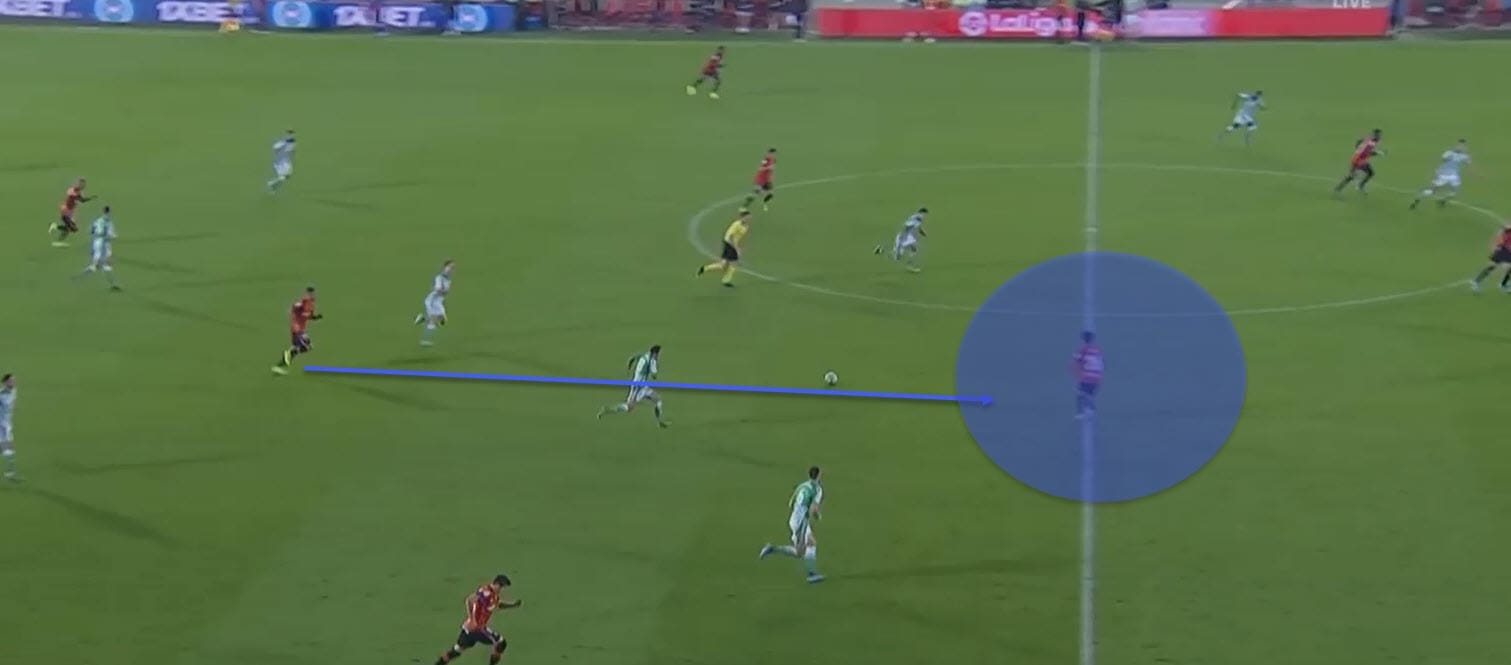
Despite making use of the newfound space, as pictured above, Mallorca couldn’t find the equaliser to snatch away a point for their troubles.
Conclusion
Real Betis really did feel like the more dominant side throughout the first half of the game but Mallorca went down swinging, to say the least. Even though they were mostly passive in the first 45 minutes of the clash, the tables were turned in the latter stages of the game as the hosts started firing back.
Still, even with the momentum successfully changing and Mallorca’s tactics finally coming together, it was not enough to turn the tides in their favour, as was explained by this tactical analysis.

If you love tactical analysis, then you’ll love the digital magazines from totalfootballanalysis.com – a guaranteed 100+ pages of pure tactical analysis covering topics from the Premier League, Serie A, La Liga, Bundesliga and many, many more. Buy your copy of the November issue for just ₤4.99 here






Comments